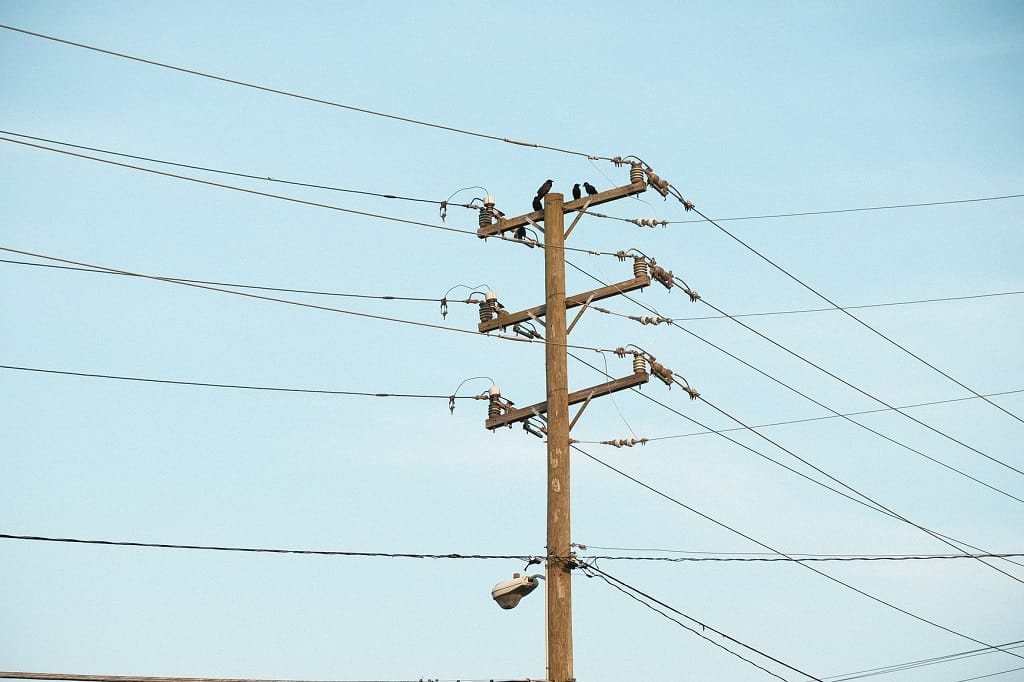Pole Access Delays Cost Americans Millions a Month, Report Claims
Report recommends policymakers streamline access to poles as ‘most efficient’ means of broadband expansion.
Ahmad Hathout

WASHINGTON, December 2, 2021 – Policymakers at the federal and state level must reform pole attachment policies to facilitate faster broadband deployment and unlock millions in economic benefits, according to a Connect the Future report released Thursday.
The report by Edward Lopez, a professor of economics at Western Carolina University, and pole attachment expert Patricia Kravtin concludes that allowing broadband providers to attach their equipment on utility poles “is the most efficient means to expand high-speed broadband access to currently unserved areas of the country.”
The report also estimates that delayed expansion due to hold ups at poles “costs Americans between $491 million and $1.86 billion” every month.
Service providers generally either bury telecommunications cables in the ground, which can be prohibitively expensive in remote areas of the country, or attach equipment over land on utility poles, which are often owned by electricity companies. While the latter is a standard practice, sometimes there are permit delays or disagreement on attaching fees that have created frictions.
Pole attachments will play a significant role for broadband expansion, as federal dollars pour in from sources including the Infrastructure Investment and Jobs Act, signed into law last month, and as 5G networks require more attachments.
The report determined the economic value of such a policy on a willingness-to-pay metric. That measure calculates how much more households are willing to pay per month for improvements in broadband and multiplies it by the number of locations becoming connected. For example, if 5.22 million locations become connected as a result of the Federal Communications Commission’s $9-billion Rural Digital Opportunity Fund, that would generate a monthly WTP of $579 million. The figure is then annualized in terms of net present value over 25 years at a 5 percent discount rate. The study includes case studies in North Carolina, Florida, Kentucky, Missouri, Texas, and Wisconsin.
The “new report makes clear that as our country continues to invest public and private dollars into expanding broadband access, policymakers must take immediate action to ensure that these investments are maximized for impact to bring connectivity to rural communities without delay – and this includes reforming outdated and ineffective pole attachment rules,” Zach Cikanek, executive director of Connect the Future, said in a press release.
“Policymakers can do this by guaranteeing a faster, fairer process for utility pole access, replacements, and dispute resolution to speed the construction of broadband infrastructure so we can more quickly achieve 100% connectivity across our country,” he added.
According to Thursday’s report, utility pole owners have exercised “significant market power over pole attachment rates, terms and conditions” and “frequently impose onerous timetables, unfeasible permitting fees, and various pre- and post-construction requirements, including full pole replacements ahead of scheduled replacement, as part of ‘make-ready’ procedures required prior to the actual attachment to the pole.”
There have been a number of lawsuits popping up in courts across the country that have involved large telecoms trying to gain cost efficient and timely access to those poles. Last year, the Federal Communications Commission found Verizon paid “unjust” pole attachment fees to a utility company in Maryland, as it billed the maximum rate possible.
And earlier this year, the FCC alleviated some burdens by ruling that investor-owned utilities cannot charge new attachers for pole replacements if they are not the sole cause for the replacement. This stems from telecom companies having to front the cost for replacing a pole if an assessment shows that adding new equipment would warrant the change.










Member discussion